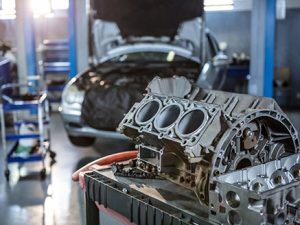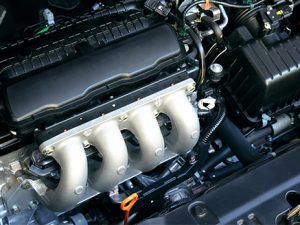Table of Contents
Types of Car Engines

Car engines come in various types, primarily distinguished by the kind of fuel they use and their configuration. Here are some common engine types:
- Internal Combustion Engine (ICE): This is the most common type of engine, which uses gasoline or diesel to power vehicles. It operates by igniting fuel inside the engine, causing a series of explosions that push the pistons.
- Electric Engine: Unlike ICEs, electric engines use electricity stored in batteries to power vehicles. They are efficient, producing less pollution and fewer emissions.
- Hybrid Engine: Combines an internal combustion engine with an electric engine to improve fuel efficiency and reduce emissions.
- Hydrogen Fuel Cell Engine: Uses hydrogen gas to power electric motors in vehicles.
Table: Comparison of Engine Types
| Engine Type | Fuel Source | Efficiency | Emissions |
|---|---|---|---|
| Internal Combustion Engine | Gasoline/Diesel | Moderate | High |
| Electric Engine | Electricity | High | Low |
| Hybrid Engine | Gasoline & Electricity | High | Moderate |
| Hydrogen Fuel Cell Engine | Hydrogen | High | Very Low |
How Car Engines Work

A car engine works by converting energy from fuel into mechanical energy that propels the vehicle. Here’s a basic rundown of the process:
- Intake: The engine takes in air and fuel, preparing it for combustion.
- Compression: The mixture is compressed, making it more volatile and increasing its explosive power.
- Combustion: A spark ignites the compressed air-fuel mixture, causing a mini-explosion that pushes the piston down, turning the crankshaft.
- Exhaust: Spent gases are expelled from the engine through the exhaust valve.
Components of a Car Engine
Car engines are complex machines with many components. Here are the key parts:
- Pistons: Move up and down inside the cylinders, driven by explosions from the combustion process.
- Cylinders: House the pistons and a chamber where fuel combustion occurs.
- Crankshaft: Converts the vertical motion of the pistons into rotational motion.
- Camshaft: Opens and closes the engine’s valves to allow the intake of air-fuel mixture and release exhaust gases.
- Valves: Allow air/fuel in and exhaust out; open and close in time with the pistons.
- Connecting Rod: Links the pistons to the crankshaft.
Table: Engine Components and Their Functions
| Component | Function |
|---|---|
| Pistons | Move to create compression and power strokes |
| Cylinders | Contain the pistons and combustion chamber |
| Crankshaft | Converts piston movement into rotary motion |
| Camshaft | Operates the opening and closing of valves |
| Valves | Intake of air-fuel mixture and exhaust release |
| Connecting Rod | Transfers motion from piston to crankshaft |
For a detailed breakdown of each component, you can visit our Engine Parts section.
The Role of Pistons and Piston Rings in Engine Compression and Oil Control
Pistons and piston rings are two of the most critical components within an internal combustion engine. Together, they perform the essential functions of maintaining cylinder compression, controlling oil consumption, and transferring the explosive power of combustion into mechanical energy that drives your vehicle. When functioning properly, pistons and their rings…
Cooling System Components: How Your Engine Stays Cool Under Pressure
Your car’s engine is a heat-generating powerhouse. While internal combustion generates the energy needed to propel your vehicle, it also creates intense temperatures that can damage engine parts if left unmanaged. That’s where the cooling system steps in — a network of components designed to maintain a safe operating temperature,…
How Turbochargers Boost Engine Performance: Benefits and Maintenance Tips
Turbochargers have revolutionized how internal combustion engines perform, providing drivers with enhanced power, better efficiency, and improved overall driving experience. While once limited to high-performance sports cars and heavy-duty vehicles, modern turbochargers are now found in everything from small sedans to hybrid SUVs. In this article, we’ll explain how turbochargers…
The Role of the Fuel Injection System in Modern Engines
The fuel injection system is one of the most critical innovations in modern internal combustion engines. It plays a central role in fuel delivery, affecting engine performance, fuel economy, and emissions. Gone are the days of carburetors; today’s fuel systems are smarter, more efficient, and integral to meeting both driver…
The Importance of Engine Mounts: Function and Symptoms of Wear
Engine mounts might not be the most talked-about components under the hood, but they play a vital role in your vehicle’s operation and comfort. These small but robust parts are responsible for holding the engine in place, reducing vibrations, and ensuring smooth operation of the drivetrain. In this article, we’ll…
The Role of the Crankshaft and Camshaft in Engine Operation
The smooth operation of a car engine relies on the precise coordination between two key components — the crankshaft and the camshaft. These mechanical elements convert energy, manage timing, and ensure that valves and pistons work in harmony. Understanding how these shafts function and interact is essential for anyone looking…
Signs of a Failing Head Gasket and What to Do Next
A head gasket plays a vital role in the operation of your car’s engine. It seals the combustion chambers, oil passages, and coolant channels between the engine block and cylinder head. When this component fails, it can lead to serious engine damage, expensive repairs, and even complete engine failure if…
Common Causes of Engine Knocking and How to Prevent It
Engine knocking is one of the most concerning sounds a driver can hear. That rapid tapping or pinging noise under the hood often signals that something is wrong with your car’s combustion process. If left unresolved, engine knock can lead to severe engine damage, reduced fuel economy, and costly repairs….
Diesel vs. Gasoline Engines: Key Differences and Component Variations
The debate between diesel and gasoline engines has been ongoing since the early days of the automobile. While both serve the same fundamental purpose — to convert fuel into energy that powers a vehicle — they operate differently, use distinct components, and suit different driving needs. In this article, we’ll…
How to Diagnose and Fix Common Engine Overheating Issues
An overheating engine is one of the most alarming problems a driver can face. Not only can it leave you stranded, but if not addressed promptly, it can lead to costly damage, including warped cylinders, blown gaskets, or even a seized engine. Understanding how to diagnose and fix common engine…